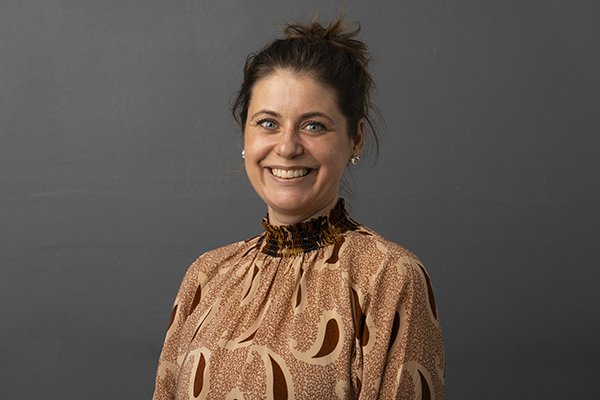Kristine Bohmann
Research leader

Project title
New frontiers in biomonitoring - airborne environmental DNA for terrestrial vertebrate and insect surveys (airDNA)
What is your project about?
A few years ago, my research group and I developed a so-called 'DNA vacuum,' and we demonstrated that mammals, birds, amphibians, and reptiles leave DNA traces in the air that we can collect and use to map their presence.
In the Sapere Aude project, my research group and I will firstly investigate whether airborne DNA reflects local insect communities - the maybe ecologically most important animal group. We will then develop the underlying DNA methods to make it possible to generate data across land-living mammals, birds, amphibians, reptiles, and insects through so-called 'multiplexed metabarcoding’ of air samples. We will apply the method to airborne DNA collected across ecosystems and climate zones, ultimately to develop an efficient method for mapping land-living vertebrates and insects through airborne DNA.
How did you become interested in your particular field of research?
During my MSc studies in Biology, I took some courses at Lund University. Here, I came across a poster from Cambridge University advertising a course in tropical biology in Uganda. This resulted in a month-long stay at a field station in a rainforest. And that is the reason I am where I am today. I not only learned a lot, I also met a professor from Eswatini, who became my MSc thesis supervisor. After I had done fieldwork for my MSc in Eswatini, I got in contact with a researcher in Copenhagen who had just discovered a new way to harness the capacity of the then-new 'high-throughput' sequencing instruments for environmental DNA analyses. I used that method in my thesis. And with that, the path to where I am today was paved.
What are the scientific challenges and perspectives in your project?
The animal DNA we 'vacuum' from the air is quite sparse. In addition, it is found in a complex mixture of various airborne particles as well as DNA from, for example, fungi, plants, and bacteria. This makes it challenging to develop the 'multiplexing' method. Another challenge is that weather conditions can affect the collection of airborne DNA. For instance, precipitation can wash air particles out of the atmosphere. Therefore, we need to assess the accuracy of mapping animals using airborne eDNA under different meteorological conditions.
What is your estimate of the impact, which your project may have to society in the long term?
To counter the current biodiversity crisis, we need accurate information on what animal species occur where. However, most species are hard to record. Hampering all informed management and policy is a lack of efficient, non-invasive and scalable tools for gathering data across multiple taxonomic groups for comprehensive
biodiversity surveys. If the project is successful in providing a robust, sensitive and widely applicable technical framework, it can be significant for our ability to characterise animal communities, assess restoration efforts, track declines and progress in achieving biodiversity targets, inform conservation efforts – all of which are of global importance given the ongoing climate and biodiversity crisis.
Which impact do you expect the Sapere Aude programme will have on your career as a researcher?
We are only just beginning to realize the potential of how DNA in the air can be used to map biodiversity, and the Sapere Aude: DFF Starting Grant is vital for me to drive this new research field forward. It provides me with the opportunity to assemble a research group to pursue big ideas and ambitious, long-term research goals, as well as to train a new generation of PhD students and postdocs within this emerging research area. Importantly, it allows me to establish new international collaborations and bring knowledge and new analytical methods to my research group.
Background and personal life
I am curious. That has given me many experiences. For example, I found a medieval pilgrim ampulla at Hammershus on Bornholm, which was later declared as ’danefæ’, and I found archaeological human bones lying in a roadwork. I also enjoy searching for amber along the coasts around Denmark. Additionally, I have lost my heart to the vast landscapes and the sunset on the savanna in Southern Africa. Once, I stayed in a tent there for months, cooking over a fire under the stars. I live with my partner in Copenhagen, and I relax by teaching myself to knit, take a dip in the harbor, and going for a run.
View all research leaders here
Research institution
University of Copenhagen
Research field
Biology
City of your current residence
Copenhagen K
High school
Næstved Gymnasium
